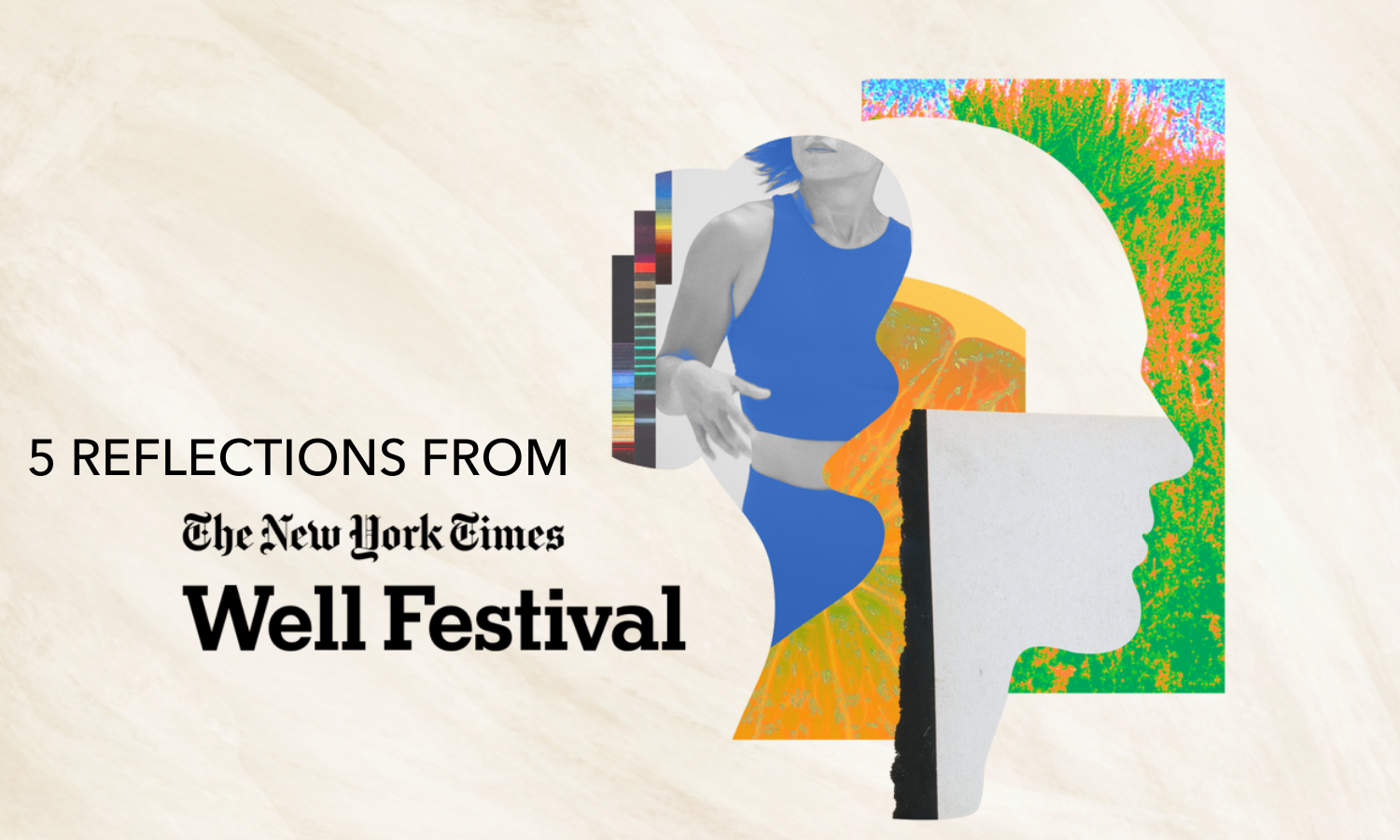This isn’t a post about marketing strategy. It’s about understanding people, which is what’s truly at the heart of marketing strategy.
Recently I attended the first-ever New York Times Well Festival, where speakers explored the full landscape of wellness. Like the Well section of the Times, they covered mental health, food, movement, creativity, relationships and beyond. It was a reminder that wellness isn’t just about what we eat or how we move – it’s about how we live, lead and connect.
Working in food and nutrition marketing, I went in thinking about health and left thinking about care – and how the way we show up for ourselves and others shapes the work we do.
Here are five reflections on what wellness means to both the people who market it and the ones it’s meant to reach.
1. Wellness Is Collective
Joy Robins, Chief Advertising Officer at the New York Times, described wellness as “a collective ability to thrive.”
In marketing, we often work to understand both the individual and the community – what people want for themselves and what they hope for the world around them. Wellness lives in that balance. We thrive when we connect personal needs with shared values. When we understand one another. When our work reflects not just individual lives, but the networks of care and culture that shape them.
The most resonant messages invite people into something bigger: a sense of connection around shared values.
Meaning: Wellness reminds us that no one thrives in isolation. The most powerful messages connect with both the individual and the whole.
2. Wellness Is Meaning
One of the most resonant moments came from actress Tracee Ellis Ross, who shared that her body’s purpose isn’t to look a certain way, but to support her dreams.
That shift from appearance to purpose captured a broader theme: wellness is meaning. It’s the practice of honoring our needs and values – not just personally, but in our work and relationships.
Wellness doesn’t ignore goals but puts them in context. In marketing, we move fast – measuring, optimizing, chasing momentum. But meaningful work begins with alignment with purpose.
Are we creating in a way that reflects our values? Are we serving our audience, our organization and ourselves with integrity?
Meaning: Wellness is living in alignment with purpose, not just chasing metrics.
3. Wellness Is Nourishing
We’ve all seen attempts at wellness that reduce food to simple nutrients, but food’s role is deeply human. Festival speakers reminded us that meals we share and our eating rituals help us understand ourselves. They connect us to culture, to family, to comfort and, of course, to wellness.
Food is more than fuel: it’s memory and meaning. Every meal tells a story, and many stories are shared around a meal. For food marketers, this is a call for more thoughtful storytelling.
Eating and emotion are deeply intertwined, even in how we speak about it (comfort foods, cravings, guilty pleasures, etc.). That’s because food is an extension of how we experience and connect to the world and each other, which in turn is a reflection of ourselves, our values and our needs.
This isn’t just about nutrients – our ability to embrace wellness relies on personal and cultural relevance. And that begins with how we think about what’s on our plate.
Meaning: Celebrate the emotional and cultural richness of food. Craft stories that nourish not just the body, but the soul.
4. Wellness is Reflective
Terry Real, a therapist known for his work on emotional honesty and reconciliation, offered one of the Festival’s most grounding takeaways: wellness isn’t just about our own needs but also how we relate to others when things get hard.
Emotional literacy and empathy aren’t “nice to haves.” They’re essential to wellness in both personal and professional life. The ability to listen, stay present, de-escalate conflict and approach challenges without defensiveness is a form of personal and collective wellness. And in creative industries like marketing, it’s often the difference between finding connection with or alienating your audience.
Relational intelligence makes us more intuitive marketers. It helps us notice what’s unsaid, what’s sensitive and what people actually need – not just what they claim to want. It builds trust with teams and audiences.
Meaning: Wellness is knowing how to stay connected – with empathy, humility and thoughtfulness especially when it’s hard.
5. Wellness Is Change
Across sessions on mental health, movement and technology, one theme came through clearly: wellness is not a fixed state or a task to master. It’s deeply personal and it evolves as our lives and needs do.
What supports one person’s well-being might feel restrictive to someone else. What worked last year might not work now. And that’s okay. In a world full of competing advice and performance metrics, the ability to define wellness on your own terms is what makes it sustainable.
For marketers, especially in health, food or lifestyle spaces, this means resisting the urge to prescribe. Audiences want space to personalize, and allowing for nuance builds trust.
Meaning: Make space for people to define wellness on their own terms, based on individual needs. Invite, don’t prescribe.
Ultimately, the way we model wellness ourselves influences how we market wellness to others.
Wellness isn’t a tactic. It’s how we lead, listen and create. Whether we’re designing a campaign or writing a headline, the way we intersect our values with our audiences’ enables us to both inform and connect.
Wellness also isn’t about perfection. It’s practice. Human needs and cultural context will constantly evolve, but authenticity and intention ensure real wellbeing.
Above all, better wellness in our work starts with how we live and lead. With presence and integrity, wellness becomes a natural part of the process to better understand and support our audience.
